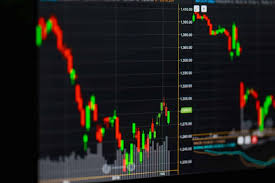Forex trading, or foreign exchange trading, is the process of buying and selling currencies on the foreign exchange market. The main purpose of forex trading is to make a profit by taking advantage of fluctuations in currency exchange rates. With traders worldwide participating in this dynamic market, it’s important to understand the basics of forex trading and how it operates. For more detailed information, you can check out what is forex trading https://acev.io/.
Much like the stock market, the forex market operates on a vast scale, with trillions of dollars traded every day. However, there are key differences that set forex trading apart from other types of trading, such as equities or commodities.
What Is Forex?
The term “forex” is short for “foreign exchange,” which refers to the marketplace for currency trading. It involves trading one currency for another, such as the euro against the U.S. dollar (EUR/USD), to take advantage of the changing value of these currencies. The forex market is decentralized, meaning that it does not have a physical location or central exchange, and operates 24 hours a day throughout the week.
How Forex Trading Works
Forex trading involves buying and selling currency pairs. A currency pair consists of two currencies: the base currency and the quote currency. For example, in the currency pair EUR/USD, the euro is the base currency, and the U.S. dollar is the quote currency. The exchange rate of this pair shows how much of the quote currency is needed to purchase one unit of the base currency.
When traders speculate on forex, they predict whether the value of the base currency will go up or down relative to the quote currency. If they believe the euro will strengthen against the dollar, they may buy EUR/USD; conversely, if they think the euro will weaken, they might sell it.
The Forex Market and Its Participants
The forex market is comprised of various participants who play different roles, including:
- Central Banks: These institutions manage their country’s currency, interest rates, and money supply. They can influence exchange rates through monetary policy.
- Commercial Banks: Banks conduct large volumes of trades on behalf of clients and themselves. They provide liquidity to the market.
- Financial Institutions and Hedge Funds: These entities trade currencies to hedge against risk or speculate for profit.
- Retail Traders: Individual traders who buy and sell currencies via online trading platforms.
- Corporations: Businesses engage in forex trading to manage currency risks associated with international transactions.

Major Currency Pairs
In forex trading, there are major, minor, and exotic currency pairs. Major pairs involve the most traded currencies globally and typically have higher liquidity and narrower spreads. Some examples of major currency pairs include:
- EUR/USD – Euro / US Dollar
- USD/JPY – US Dollar / Japanese Yen
- GBP/USD – British Pound / US Dollar
- USD/CHF – US Dollar / Swiss Franc
What Influences Currency Exchange Rates?
Numerous factors can affect currency exchange rates, including:
- Interest Rates: Central bank interest rates influence currency value; higher rates offer lenders a better return relative to other currencies.
- Economic Indicators: Data like GDP, employment rates, and consumer spending can impact currency strength.
- Political Stability: Countries with less risk for political turmoil and economic stability often see stronger currencies.
- Market Speculation: Currency traders base their trades on expectations of future economic performance.
How to Start Trading Forex
Getting started in forex trading requires several steps:
- Education: Learn the basics of forex trading by reading books, taking online courses, and following market news.
- Select a Broker: Choose a reliable forex broker that offers a trading platform suitable for your needs, taking into account fees, spreads, and available currency pairs.
- Practice with a Demo Account: Most brokers offer demo accounts that allow you to practice trading without risking real money. Use this opportunity to familiarize yourself with trading tools and strategies.
- Develop a Trading Plan: Successful traders typically have a well-thought-out trading plan that includes risk management, entry and exit strategies, and trading goals.
- Start Trading: Once you feel ready, you can fund your live trading account and begin trading with real money.
Forex Trading Strategies
There are various forex trading strategies that traders adopt based on their goals and risk appetite. Common strategies include:
- Scalping: This involves making multiple trades throughout the day for small profits.
- Day Trading: Traders open and close positions within the same day, taking advantage of intraday price movements.
- Swing Trading: This strategy aims to capture larger price movements over several days or weeks.
- Position Trading: Traders hold positions for the long term, often for several months, based on fundamental analysis.
Risk Management in Forex Trading
One of the most critical aspects of forex trading is managing risk. Traders use various methods to limit potential losses, such as:
- Setting Stop Loss Orders: This automatic order closes a trade once it hits a predetermined loss level.
- Using Proper Position Sizing: This method determines how much capital to risk on each trade based on account size and risk tolerance.
- Diversification: Traders often diversify their portfolios by trading multiple currency pairs to spread risk.
Conclusion
Forex trading offers a unique opportunity for individuals and institutions to speculate on currency pairs and potentially profit from fluctuations in exchange rates. However, it requires a solid understanding of the market, strategies, and prudent risk management practices. As you embark on your forex trading journey, remember to continuously educate yourself, practice, and refine your skills to enhance your trading success.

